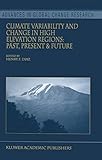Climate variability and change in high elevation regions : past, present & future [Libro electrónico] / editors: Henry F. Diaz
Diaz, Henry F [editor].
Tipo de material: Libro
en línea Editor: Dordrecht, The Netherlands: Kluwer Academic Publishers, c2003Descripción: 282 páginas : diagrs., fotografías, gráf., mapas ; centímetros.ISBN: 9048163226; 9789048163229; 9789401512527 (Online).Nota de acceso: Disponible para usuarios de ECOSUR con su clave de acceso Nota de bibliografía: Incluye bibliografía: páginas 279-282 Número de sistema: 57303Resumen:
Libro
en línea Editor: Dordrecht, The Netherlands: Kluwer Academic Publishers, c2003Descripción: 282 páginas : diagrs., fotografías, gráf., mapas ; centímetros.ISBN: 9048163226; 9789048163229; 9789401512527 (Online).Nota de acceso: Disponible para usuarios de ECOSUR con su clave de acceso Nota de bibliografía: Incluye bibliografía: páginas 279-282 Número de sistema: 57303Resumen:| Tipo de ítem | Biblioteca actual | Colección | Signatura | Estado | Fecha de vencimiento | Código de barras |
|---|---|---|---|---|---|---|
| Libros | Biblioteca Electrónica Recursos en línea (RE) | Acervo General | Recurso digital | ECO400573039577 |
Incluye bibliografía: páginas 279-282
Disponible para usuarios de ECOSUR con su clave de acceso
Glaciers in the Andes are particularly important natural archives of present and past climatic and environmental changes, in significant part because of the N-S trend of this topographic barrier and its influence on the atmospheric circulation of the southern hemisphere. Strong gradients in the seasonality and amount of precipitation exist between the equator and 30 S. Large differences in amount east and west of the Andean divide also occur, as well as a change from tropical summer precipitation (additionally modified by the seasonal shift of the circulation belts) to winter precipitation in the west wind belt (e. g., Yuille, 1999; Garraud and Aceituno, 2001). The so-called 'dry axis' lies between the tropical and extra tropical precipitation regimes (Figure 1). The high mountain desert within this axis responds most sensitively to the smallest changes in effective moisture. An important hydro-meteorological feature on a seasonal to inter-annual time-scale is the occurrence of EN SO events, which strongly control the mass balance of glaciers in this area (e. g., Wagnon et ai., 2001; Francou et ai., in press). The precipitation pattern is an important factor for the interpretation of climatic and environmental records extracted from ice cores, because much of this information is related to conditions at the actual time of precipitation, and this is especially so for stable isotope records. Several ice cores have recently been drilled to bedrock in this area. From Huascanin (Thompson et ai., 1995), Sajama (Thompson et ai." eng
Disponible en línea
Disponible en formato PDF
Subscripción a ELSEVIER 26 de diciembre del 2013
